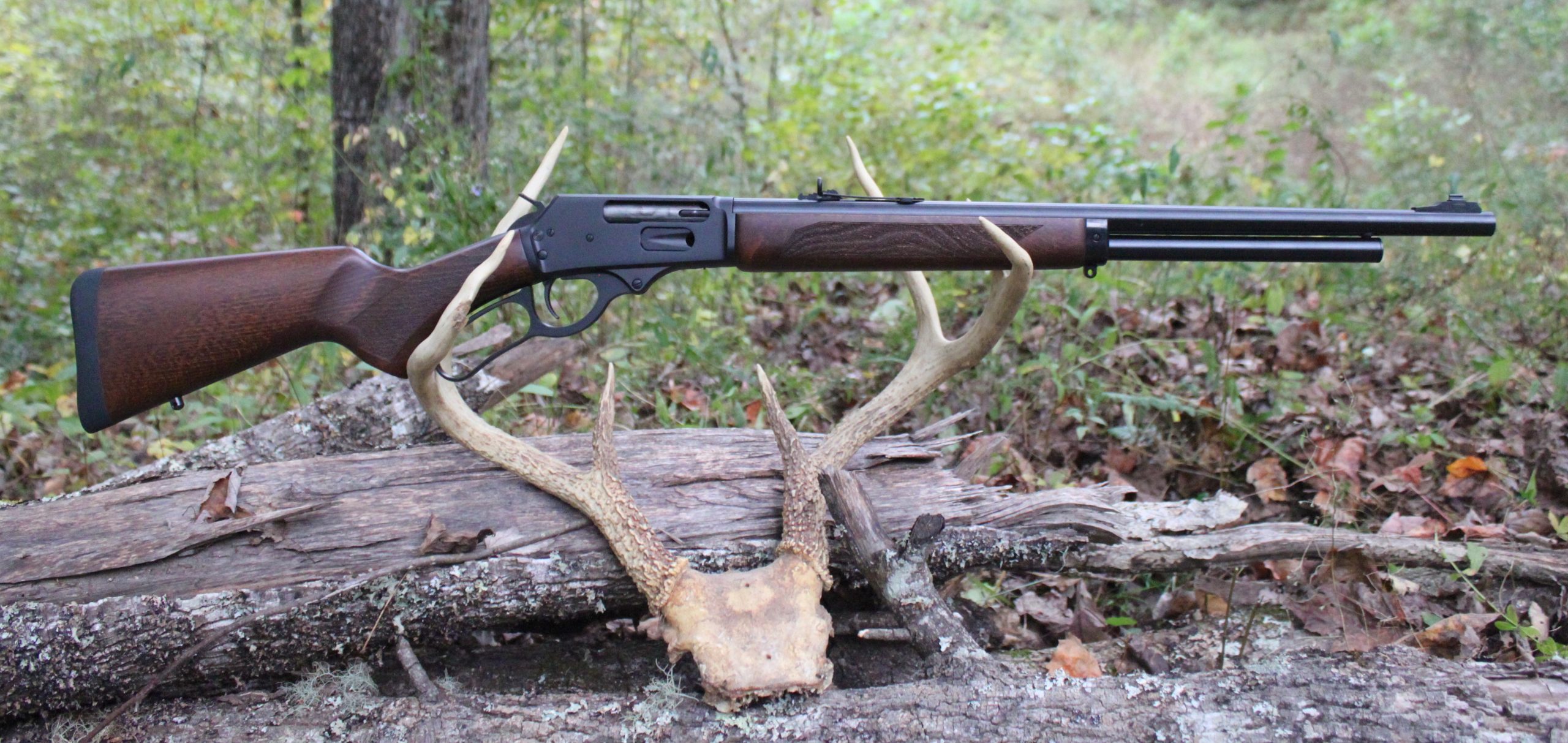
By Jim Dickson | Contributing Writer
I have had many years of experience with Rossi lever action rifles, having bought one of the first Model 1892 Rossi rifles in .45 Colt when they first came available back in the days when Interarms was the importer.
Intended for Brazilian use in the Amazon rain forest it came with a thick coat of wax on the stock which certainly was a good idea in that environment. I cleaned it off with WD-40, which left the stock a beautiful reddish color.
For decades now it has worked flawlessly and the workmanship, fit, and finish were as good as any lever action out there. So when Rossi came out with a .45-70 lever action I wanted to review one. When I picked up the rifle for review at Reeves Ace Hardware in Clayton, Georgia I was not disappointed.
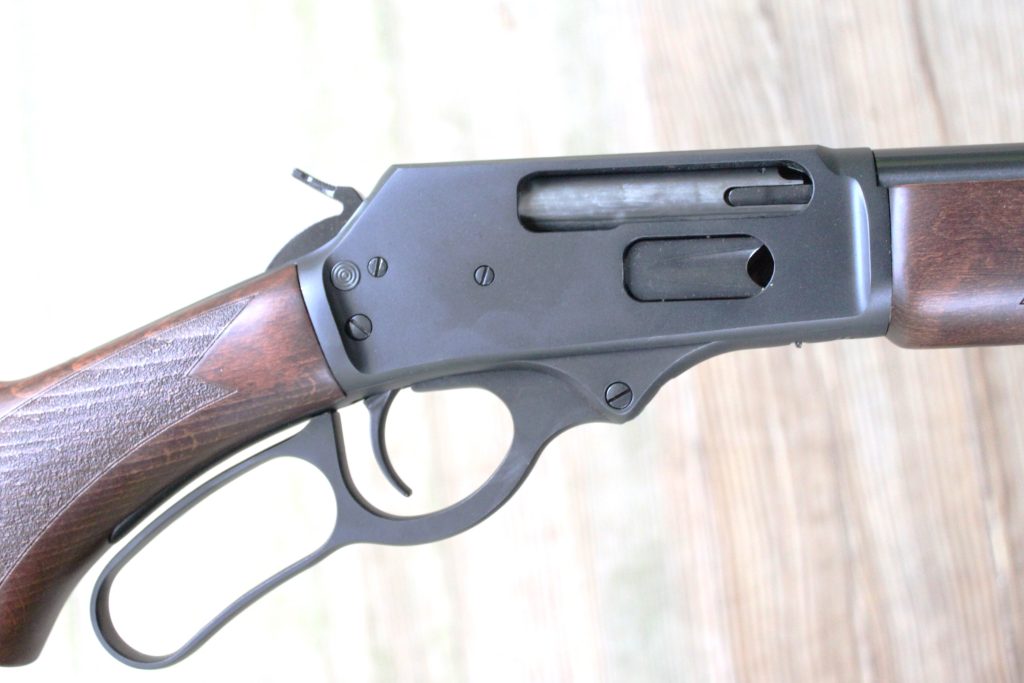
The 22-inch barrel version that I tested is 41 inches long and weighs just over 7 pounds unloaded on my grocery scales. According to the Rossi website, this model is supposed to weigh 7.0125 pounds. It is fast handling yet hangs steady.
The traditional buckhorn sight is as perfect an example of a buckhorn as I have ever seen. For those who want a scope sight the receiver is already drilled and tapped for mounts. Fit and finish are still first rate and the rifle’s action leaves nothing to be desired in reliability and functioning. Trigger pull was 6 pounds as measured by a Lyman mechanical trigger pull gauge from Brownell’s Gunsmithing Supplies.
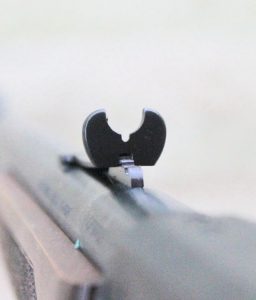
It is worth remembering that Brazil still has a wild frontier and the guns have to function there. Their customers are not poor and if their guns don’t measure up they will quickly buy from another maker. I have never seen a Rossi gun that did not measure up to its competition. It is competitively priced in the U.S. with a MSRP of $1060.99.
When it comes to .45-70 lever actions they all seem to be copies of either the Winchester or the Marlin action. The Rossi is a version of the Marlin action which means that you can mount a scope on the receiver. This also means that it can easily be taken apart enough to clean it from the breech end so that you will not damage the rifling by repeated cleaning from the muzzle end. Due to today’s litigious society the Rossi has added a manual safety that lies below the hammer on the receiver. Pushing it to the right side of the gun puts it on safe and pushing it to the left side of the gun reveals the red paint on the push through safety indicating that it is ready to fire. The gun still has the half cock safety which is all any of us old timers ever wanted or needed on our lever actions.
The rifle has a matte satin finish instead of the high polish blue of my old 92 Rossi and the gripping area of the stock and fore end are given a rough finish instead of checkering. Regardless, it works and it still looks good. There are sling swivel mounts on the stock and fore end so you can get sling swivels from Brownell’s and fit a sling to it. I have always found a sling worthwhile if not a necessity at times when my hands were full.
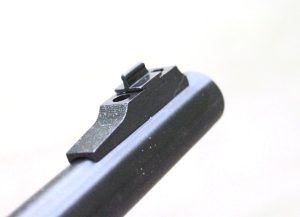
While they make many .45-70 rifles in 20 inch barrel configuration I prefer the longer 22-inch barrel version as the extra length and weight at the end make it hold more steady on target and also reduces muzzle blast noticeably. There has never been any brush so thick that an additional two inches would make a difference.
The rifle is fitted with a soft recoil pad that does a good job making this powerful rifle very pleasant to shoot. Some folks think that because the .45-70 is such a powerful round that it must kick like a Missouri mule. It doesn’t and I have fired enough different makes and models to say that with authority. In fact, the modern .45-70 lever actions have enough weight and sufficiently soft recoil pads that they are more pleasant to shoot than the M92 and M94 Winchesters. The M92 may not have any noticeable recoil but you will start to feel the cumulative effect of firing a large number of shots before you will with the .45-70’s in an 8 pound 2 ounce octagon barrel steel frame Henry rifle. This despite the fact that some of the .45-70 loads have greater Taylor Knock Out Values than the .375 H&H Magnum and are right up there with the .404 Jeffery and .450-400 Nitro Express. The .45-70’s may buck but they don’t kick. This is my conclusion after firing many thousands of rounds through the various guns in these calibers.
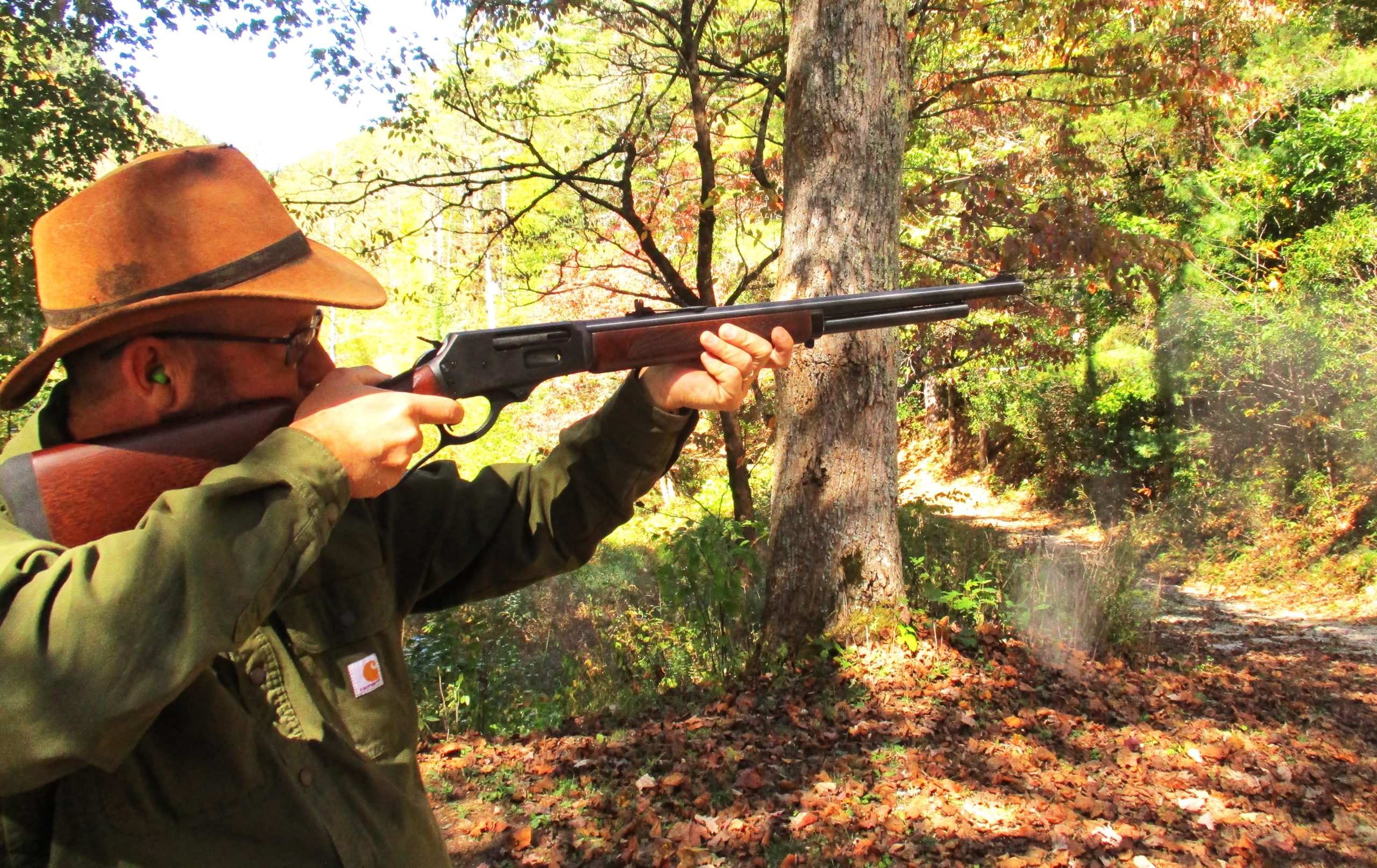
Think about it for a minute. Why would you settle for a lesser caliber when you have one that hits like a sledge hammer yet is pleasant to shoot? I remember a military rifle instructor who shot a running black bear in the vitals with a .30-30 and it didn’t even slow down. He got to thinking what it was running from and got scared and left. If he had used a .45-70 he would have bowled that bear over on the spot. Recoil makes a lot of men flinch and a .30-06 is the upper limit for most men unless they will spend a lot of time and ammunition shooting more powerful guns. The standard 405 grain .45-70 load still has more Taylor Knock out values at 300 yards than the 180-grain .30-06 has at the muzzle yet the .45-70 has less felt recoil in the same weight gun. Seems like the .45-70 is the obvious choice.
Why do you need so much power? Run into a big bad tempered bear or wild boar and you will find out fast. You need something that will stop them in their tracks, not something that will bring them down after they have first worked you over good.
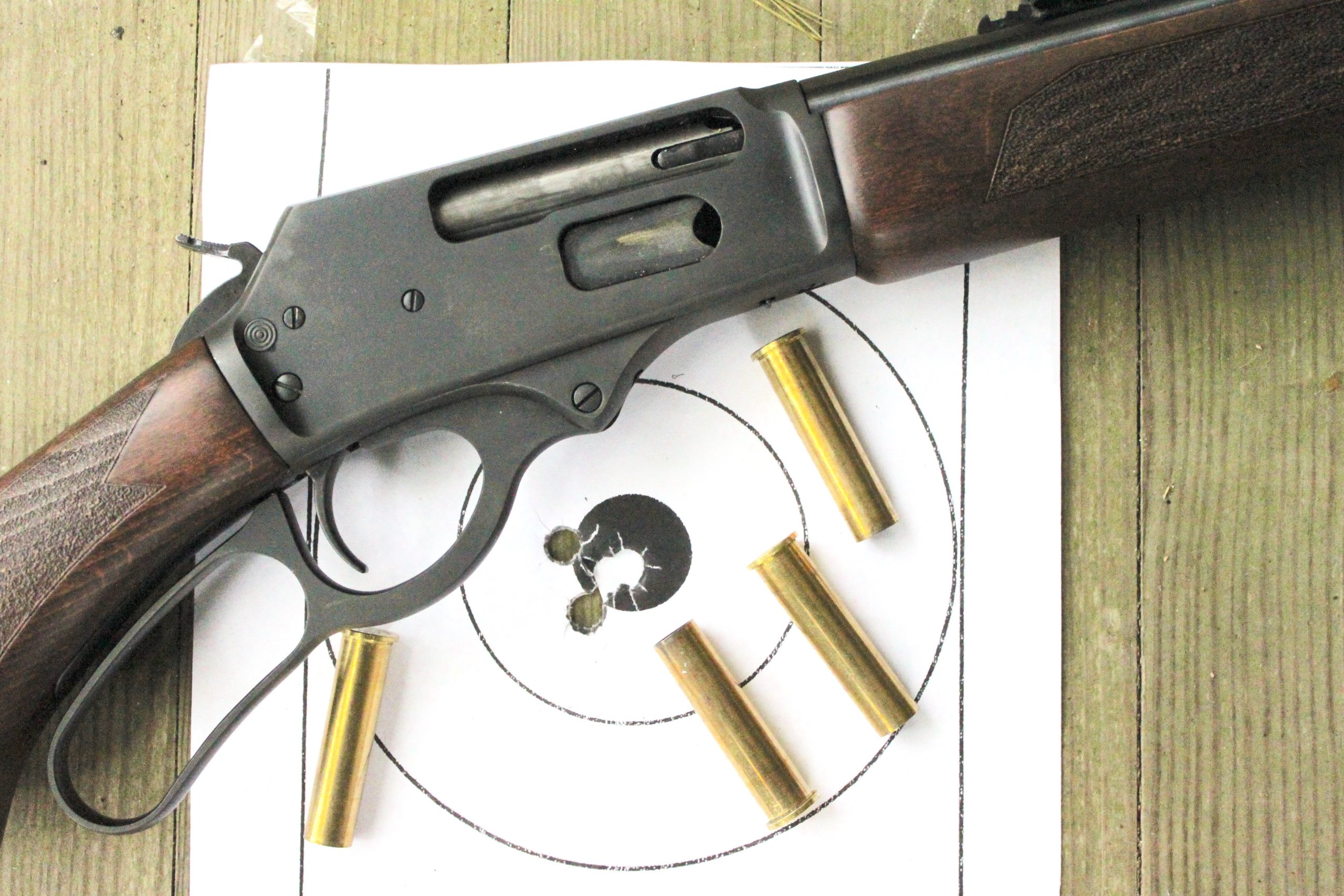
Also, not all shots fly true for brush can easily deflect bullets. If bullet placement is less than precise then the stakes go up and a more powerful round is your life insurance. Even when shooting whitetail deer from a tree stand you have to deal with the fact that a heart shot deer is famous for making a 100-yard dash before piling up dead, potentially in front of another hunter who put a final shot into it and claimed it. Also a deer may change directions during that run, and a hundred square yards is a huge area to search and if the deer runs among a bunch of fresh deer tracks or into swampy ground he may be impossible to track. Knock down power here can sometimes make the difference between venison for supper and going hungry.
I had 465 rounds to fire through the .45-70 Rossi consisting of:
- 300 rounds of Black Hills Ammunition consisting of 200 rounds of 405-grain FPL at 12,500 FPS with Taylor Knock Out Value of 33.1 and 100 rounds of 325-grain Honey Badger at 1,933 FPS out of a 26-inch barrel with Taylor Knock Out Value of 41.10. The Honey Badger round has shot completely through American Bison with every shot. The 405-grain FPL was designed for cowboy action shooters for even less recoil but it still has plenty of power for hunting.
- 40 rounds of Steinel soft cast (16 Brinel hardness) 500-grain lead RNFP at 1,485 FPS with Taylor Knock Out Value of 48.5 and 5 rounds of 730-grain subsonic for suppressed rifles at 1.000 FPS with Taylor Knock Out Value of 47.76.
For those who think that the .45-70 is obsolete as a military cartridge I would point out that the Afghans found the British 19th Century Martini rifle chambered for the .577-450 round with its 480-grain bullet at 1,400 FPS perfect for damaging the tail rotor of the advanced Soviet Hind attack helicopters and they shot down several using this method. Both of the Steinel rounds would be even better for this, particularly the 730-grain load. Worth remembering if you are ever bothered by Soviet Hind Helicopter Gunships.
- 40 Rounds of Remington 405 grain Core-Lokt at 1600 FPS with Taylor Knock out Value of 42.39. A souped up version of the original old reliable 45-70 army load.
- 80 rounds of flat shooting Hornady 325 grain FTX Leverevolution at 2050 FPS with Taylor Knock Out Value of 43.59. This round features a soft plastic nose giving it a modern spitzer like aerodynamic shape for velocity retention while still being safe for tubular lever action magazines which previously required flat pointed bullets lest recoil set the nose of one cartridge hard enough against the primer of the cartridge in front of it to set off a magazine explosion.
I once saw a rifle that had such a magazine explosion and it was devastated. I wouldn’t give 2 cents for the man’s hand on the fore end when it blew. This round was developed jointly with the Henry Rifle Company for maximum reliability in lever actions.
The rifle was pleasant to shoot and functioned perfectly with all of these loads. It was accurate and would be an excellent choice for all North American game as it has the power to put them down quickly and humanely. For those who think the .45-70 is a short range cartridge because of its 19th Century black powder trajectory I would point out that these early shooters learned to estimate range accurately and adjust for the trajectory.
I still have a Frankfort Arsenal .45-70-500 grain round loaded for the National matches in the 1920’s where high scores were still being fired out to 1,000 yards with the old trap door Springfields. Today we have laser rangefinders so everyone can tell exactly how far their target is and hold accordingly. Remember too that most deer shot in the U.S. are shot within 100 yards despite wild range claims to the contrary. Today over 151 years after it first came out the .45-70 is still one of the best cartridges available to the American hunter and the Rossi stands among the fine choices in rifles for this round.



